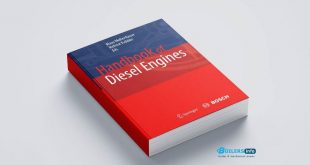Vehicle Maintenance Pro: A to Z Guide
Effective vehicle maintenance is a cornerstone of safe, reliable, and cost-efficient fleet operations. Properly maintained vehicles minimize downtime, extend their lifespan, and ensure compliance with regulatory standards. This comprehensive guide covers essential aspects of vehicle maintenance, from shop operations and personnel management to regulatory compliance and fuel efficiency improvements.
Shop Operations
The backbone of any maintenance program is an organized and efficient shop operation. Key elements include:

Determining Maintenance Schedules
Developing a proactive maintenance schedule based on vehicle usage, manufacturer recommendations, and operational demands ensures timely servicing and reduces the risk of unexpected breakdowns. Regular preventive maintenance tasks include oil changes, brake inspections, and fluid checks.
Parts Management
Efficient parts management involves inventory control, supplier relationships, and cost management. Using a computerized inventory system helps track parts usage, reduces waste, and ensures critical components are always in stock.
Recordkeeping
Accurate recordkeeping is vital for tracking vehicle performance, maintenance history, and repair costs. Digital maintenance management systems can streamline this process, providing easy access to data for audits, inspections, and performance analysis.
Operational Planning
Strategic operational planning integrates vehicle maintenance into broader business objectives. This includes scheduling maintenance during low-demand periods, allocating resources effectively, and forecasting future needs based on fleet growth and operational changes.
Vehicle Systems and Specifications
Understanding vehicle systems and their specifications is crucial for effective maintenance.
Requirements and Accessories
Ensure that all vehicles meet operational requirements and are equipped with necessary accessories like GPS trackers, safety kits, and emergency equipment.
Improving Fuel Efficiency and Emission Systems
Regular maintenance of engines, fuel injectors, and exhaust systems enhances fuel efficiency and reduces emissions. Upgrading to modern emission control systems, such as selective catalytic reduction (SCR), helps meet environmental regulations.
Tire Management
Tires significantly impact vehicle safety, performance, and operating costs. Tire management involves:
- Regular inspections for tread wear and damage.
- Ensuring proper inflation to improve fuel efficiency and extend tire lifespan.
- Rotating and balancing tires to achieve even wear.
Electronic Systems
Modern vehicles rely heavily on electronic systems, including advanced driver-assistance systems (ADAS), telematics, and engine control modules (ECMs). Maintenance of these systems involves:
- Updating software to ensure compatibility and functionality.
- Diagnosing and repairing issues using specialized diagnostic tools.
- Training technicians to handle sophisticated electronic components.
Personnel: Recruiting, Training, and Retaining Technicians
Qualified technicians are the foundation of an effective maintenance operation.
- Recruiting: Develop partnerships with technical schools and apprenticeship programs to attract skilled candidates.
- Training: Provide continuous education on new technologies, tools, and industry best practices.
- Retaining: Offer competitive compensation, career development opportunities, and a positive work environment to retain top talent.
Performance Evaluation
Regularly evaluating the performance of maintenance programs ensures efficiency and effectiveness. Use metrics such as:
- Vehicle uptime and downtime.
- Cost-per-mile for maintenance and repairs.
- Compliance with scheduled maintenance.
- Technician productivity and accuracy.
- The Bosch Automotive Handbook
Compliance Management
Adherence to regulatory requirements is non-negotiable for vehicle maintenance programs.
DOT (Department of Transportation)
DOT regulations govern vehicle inspections, driver safety, and hours of service. Conduct routine checks to ensure vehicles meet these standards.
OSHA (Occupational Safety and Health Administration)
OSHA standards ensure safe working conditions in maintenance shops. Implement proper hazard management, PPE usage, and equipment safety protocols.
EPA (Environmental Protection Agency)
EPA regulations focus on reducing environmental impact through emission control and waste management. Ensure proper disposal of used oil, batteries, and other hazardous materials.
Self-Audits
Conducting regular self-audits helps identify compliance gaps, inefficiencies, and potential safety issues. Self-audits should assess:
- Maintenance records and scheduling practices.
- Shop safety and cleanliness.
- Adherence to regulatory standards, including FMCSA, NHTSA, and EPA guidelines.
Regulations and Agencies
Several regulatory bodies influence vehicle maintenance practices:
FMCSA (Federal Motor Carrier Safety Administration)
The FMCSA oversees safety regulations for commercial motor vehicles, including maintenance standards and recordkeeping requirements.
NHTSA (National Highway Traffic Safety Administration)
NHTSA regulations pertain to vehicle performance, safety features, and recalls. Stay updated on NHTSA guidelines to ensure compliance.
OSHA (Occupational Safety and Health Administration)
OSHA mandates workplace safety standards, requiring proper training and equipment in vehicle maintenance shops.
EPA (Environmental Protection Agency)
Compliance with EPA standards involves managing emissions and hazardous waste responsibly.
Conclusion
A comprehensive and well-executed vehicle maintenance program is essential for ensuring safety, reliability, and cost-efficiency in any fleet operation. By focusing on structured shop operations, detailed recordkeeping, and strategic operational planning, organizations can optimize their maintenance practices. Incorporating tire management, electronic system upkeep, and fuel efficiency improvements ensures vehicles remain in peak condition, reducing downtime and operational costs.
Additionally, fostering a skilled and motivated workforce through effective recruitment, training, and retention strategies strengthens the foundation of a successful maintenance program. Performance evaluation and regular self-audits help maintain adherence to industry standards and regulations, including those set by DOT, OSHA, EPA, FMCSA, and NHTSA.
Ultimately, prioritizing vehicle maintenance not only enhances fleet performance but also upholds regulatory compliance, supports environmental sustainability, and contributes to a safer and more efficient transportation industry.
 Boilersinfo Boiler and Mechanical Power Digital Library
Boilersinfo Boiler and Mechanical Power Digital Library





